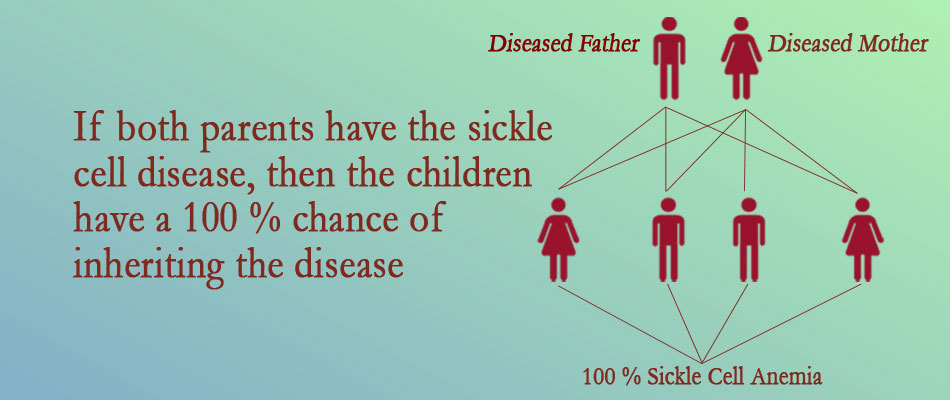
Sickle cell anemia is a genetic disease that is present from birth. It is caused by a mutation in the hemoglobin-beta gene located on chromosome 11. SCD is not contagious but is a genetic disorder. (Click here to know how sickle cell anemia runs in families http://www.medindia.net/health-infographics/sickle-cell-anemia.htm) The pattern of inheritance of sickle cell anemia is autosomal recessive. People from Africa, India, the Caribbean, the Middle East and the Mediterranean are commonly affected with SCD.
Normal red blood cells are round and flexible, which empowers them to go through through small blood vessels to carry oxygen to all parts of the body but Sickle cell disease causes red blood cells to form into a crescent shape, like a sickle. Life span of normal red blood cells is 120 days, but sickle-shaped cells live only for 10 to 20 days.

The HBB gene encodes an imperative blood protein called beta globin. Defect in this gene cause sickle cell anemia. SCD occurs when the child inherits two sickle cell genes, one from each parent. The severity of the sickle cell disease varies from person to person. Anemia is the main symptoms for sickle cell disease.
There is no cure for sickle cell anemia as it is a genetic disease. The hemoglobin level in the sickle cell anemia patients is usually between 6 to 8 gm/dl; in severe cases, blood transfusion is required. Medicines for sickle cell anemia incorporate antibiotics, pain management and blood transfusions. A new drug treatment, hydroxyurea, which is an anti-tumor drug, seems to fortify the production of fetal hemoglobin, a sort of hemoglobin normally found in infants. Penicillin is used to reduce infections.

Comments should be on the topic and should not be abusive. The editorial team reserves the right to review and moderate the comments posted on the site.